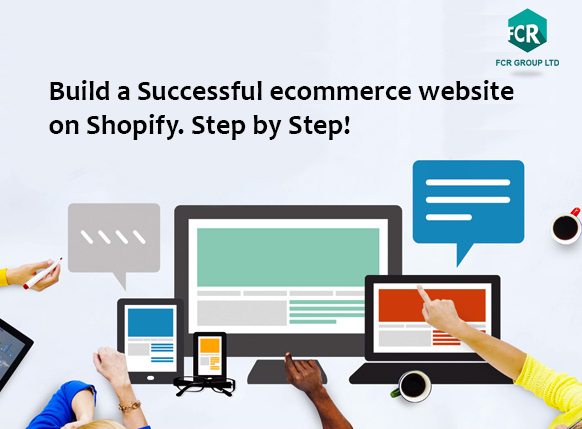Online business has taken all over the world. In this modern era of online shopping, nobody has the time to go out to shop for things every now and then. Why would someone even bother when they can get anything they want right at their doorsteps without making any efforts.
Exposure to numerous customers is the biggest reason for getting your business online. Customers that you might have never encountered at your existing store can easily access you through your online presence. This leads to the question of how to create an e-commerce website that turns out to be fruitful to you. Now, let me introduce you to a platform which allows everyone to build an e-commerce website. Shopify!

What is Shopify and how does it work?
Shopify is an e-commerce store builder that lets you use its web design, product management tools, and e-commerce. You simply need to choose a template of your choice. After which you may upload the products you are willing to sell online.
That’s a simple process. But if this had worked out for everyone then how come some people struggle to find an expected number of customers online? Why does it come out to be a disappointment rather than an opportunity for a lot of people out there? There are many factors that determine how well you are going to do in your online store.
Today I am going to guide you about the important things to consider to build a successful e-commerce website on Shopify. But first, let’s know the basic steps to create your website.
How to get started on Shopify step by step guide
- Sign up by submitting your email address.
- Submit the name of your online store.
- Fill in your address for Shopify to determine your payments and Sales Tax.
- Now you get to customize the appearance of your website.
- Choose the most suitable theme for your online store.
- Start adding your products providing their name and description.
- Next, you upload images of the products followed by setting their price and inventory.
- You also need to put in the weight of product for the delivery purpose.
- Set a name to buy a custom domain from Shopify.
- Add the payment preference method to receive product payments.
You are all set! Now ensure the success of your online store on Shopify by keeping in mind a few things given below.
Prepare before launching your online store: Ensure that your target audience comes across knowing about your upcoming online store. Figure out the ways to reach your potential customers. Marketing is the best possible way to spread the word. Prepare an email list of your potential future customers.
Know what is trending: First, you need to decide what are the products or services that people search for online the most. Whenever someone visits your online store they must be able to approach easily what they are looking for. Provide simple description with original images.
Optimization is important: You must be aware of the fact that the highest percentage of online customers approach online store using their mobile phones. This makes it obvious for you to optimize your website to appear best for mobile users.
Customer support is a must: Let’s hope that none of your customers find any fault or improper functioning in your product. But in case it happens you must have your support ready to help your customer. This will build trust in your customers making them come back to your website again and again.
Provide reliable security: Displaying your SSL certificate on your site will assure customers that their details are safe with you. Along with security also make sure that you provide an easy navigation. A search box and a simple menu must be there for your customer to easily find what they are looking for.
Utilize Content Marketing: One the most efficient way of promoting your products online is content marketing. It is among one the most successful marketing strategy. Publish articles/blogs relevant to your business to share your knowledge and authority to your customers.
Keep it fresh: Keep coming up with the ideas to improve your products, services and your relationship with your customers. It will help you stay ahead of your competitors. This way your audience will stay glued to you as well as you will be constantly attracting new customers.
Recommended article :
- The complete guide to Optimizing SEO Article
- On page SEO checklist
- Off-page SEO activities
- Steps to Increase Website Traffic
Drop a comment to let us know your opinion about Shopify development. If you enjoyed reading this article, take a moment to share it with your friends and family.
Thanks for reading.


 Now we’ll discuss some points you must keep in mind while naming your company –
Now we’ll discuss some points you must keep in mind while naming your company –